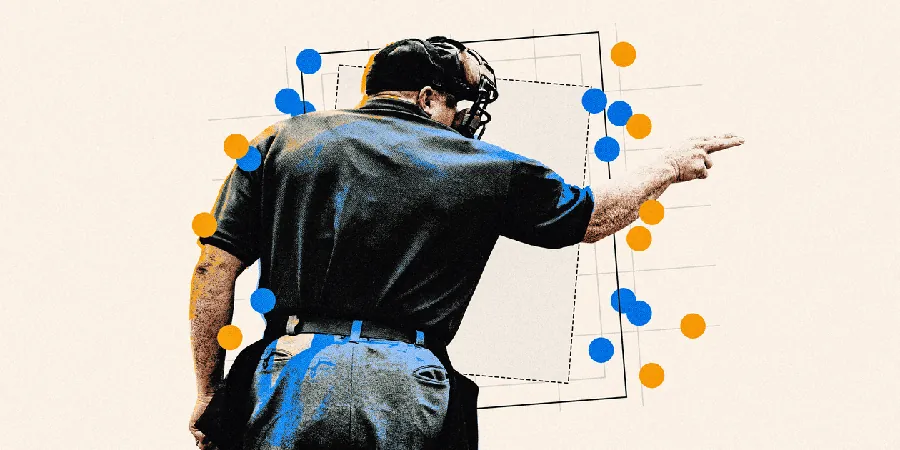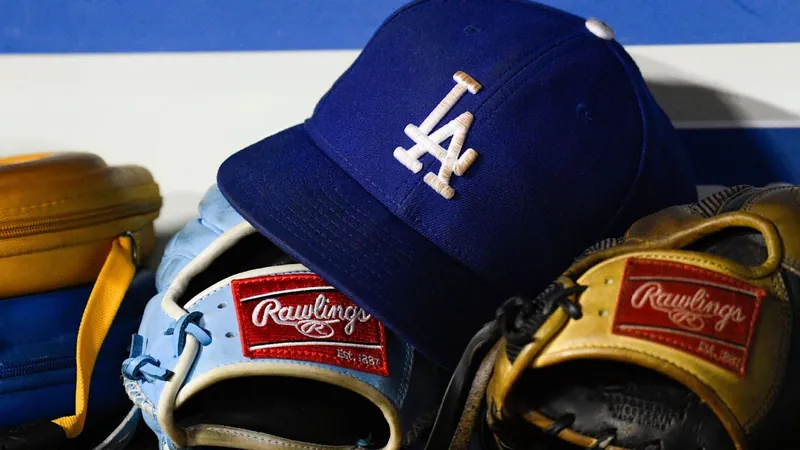
Surprise Shift: MLB's New Strike Zone Catches Players Off Guard
2025-05-03
Author: Lok
A Game-Changing Adjustment
In a startling twist that has left Major League Baseball players bewildered, a recent change in how umpires evaluate balls and strikes has seemingly tightened the strike zone. What was expected to be a simple adjustment now has pitchers, catchers, and team strategists scrambling to recalibrate their game plans.
The Details Behind the Change
Last winter, MLB reached a new labor agreement with the Major League Umpires Association, leading to a significant alteration in the umpire grading system. The buffer zone—a crucial area that offered umpires a margin for error—has shrunk from two inches to just three-quarters of an inch on all sides of the strike zone.
Angels catcher Travis d’Arnaud described the impact succinctly, saying, "Everybody’s zone has shrunk. Every (umpire) across the league." While the sheer number of affected pitches may seem small, the ripple effects are monumental.
Surprising Reactions from Players
As players grasp the implications of this change, reactions have ranged from confusion to frustration. Despite knowing the strike zone doesn’t officially change, many feel as though calls that previously would have been strikes are now being ruled as balls.
Phillies reliever Matt Strahm was caught off guard, saying, "I thought everything was going to be normal after spring . . . I wasn’t aware that the (buffer zone) has shrunk." This sentiment was echoed by numerous players who reported a lack of communication from the league.
The Impact on Gameplay and Strategy
The changes are already influencing teams' offensive strategies and pitching techniques. Coaches and analytics teams are scrambling to adjust evaluations, pitch sequences, and even roster decisions in light of these new conditions. The league reports that the strike calls made this season are the most accurate since Statcast began tracking in 2015—the numbers are up, but the players' experience says otherwise.
For many pitchers, the adjustment period feels jarring. Giants pitcher Logan Webb voiced his concerns: "If it is smaller, I do think we should be told that it’s smaller." Data has shown that there are significantly more pitches being called balls compared to last year, leading players to conduct their own research.
Mixed Reactions on the Change
Interestingly, while pitchers struggle with the tighter zone, hitters seem to welcome the shift. Astros first baseman Christian Walker voiced a common sentiment among hitters: "That’s what we’re doing out there... we all get frustrated when we feel calls don’t go our way." Many hitters are ready to embrace a stricter adherence to the rulebook strike zone.
Communication Breakdown?
Despite MLB’s assertion that managers and executives were informed of this change during the offseason, many vanishing communications have left players in the dark. Sources within multiple clubs expressed disbelief, claiming they had no prior knowledge of the new grading approach until the season began.
As frustrations rise, players are now left to adapt mid-season, navigating a landscape that has shifted beneath their feet. A veteran pitcher summed it up well: "If balls and strikes are going to be called differently, it puts pitchers at a disadvantage if they don’t know that going into the season."
Conclusion: A Season of Uncertainty
The changes to the strike zone present a fascinating case of how shifts in rules can profoundly affect gameplay and perceptions within the sport. With managers, players, and executives all seeking clarity, the upcoming meetings may lead to a more unified approach moving forward.
This MLB season promises excitement—and a learning curve—both on and off the field.






 Brasil (PT)
Brasil (PT)
 Canada (EN)
Canada (EN)
 Chile (ES)
Chile (ES)
 Česko (CS)
Česko (CS)
 대한민국 (KO)
대한민국 (KO)
 España (ES)
España (ES)
 France (FR)
France (FR)
 Hong Kong (EN)
Hong Kong (EN)
 Italia (IT)
Italia (IT)
 日本 (JA)
日本 (JA)
 Magyarország (HU)
Magyarország (HU)
 Norge (NO)
Norge (NO)
 Polska (PL)
Polska (PL)
 Schweiz (DE)
Schweiz (DE)
 Singapore (EN)
Singapore (EN)
 Sverige (SV)
Sverige (SV)
 Suomi (FI)
Suomi (FI)
 Türkiye (TR)
Türkiye (TR)
 الإمارات العربية المتحدة (AR)
الإمارات العربية المتحدة (AR)